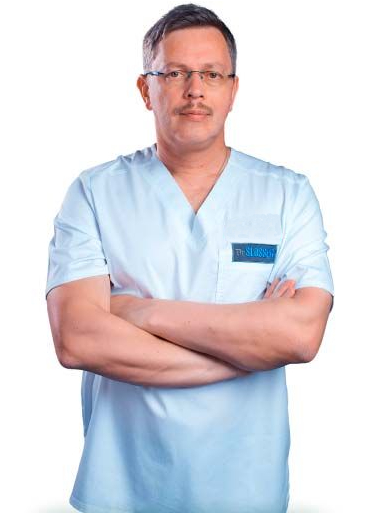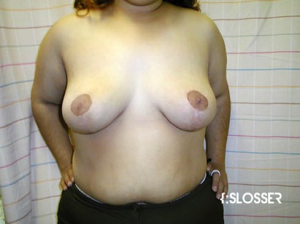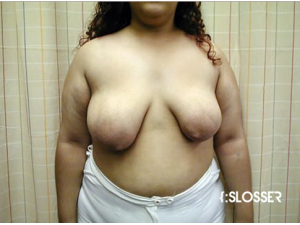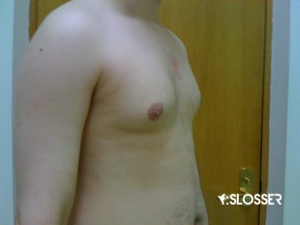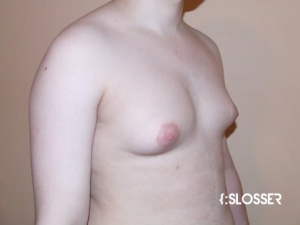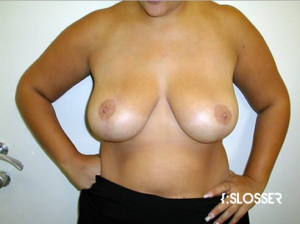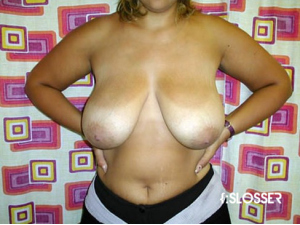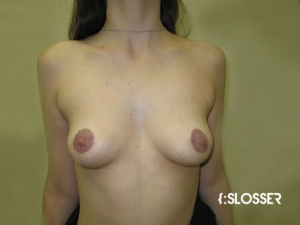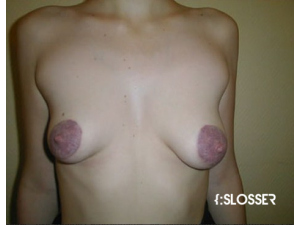Breast reconstruction surgery should be planned as soon as a diagnosis of breast cancer is confirmed. The best option is for an oncologist and plastic surgeon to work together, as they can develop an approach that takes into account the aesthetic aspects of breast restoration and ensures the best conditions for reconstruction.
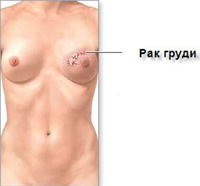
Dr. Sloser will examine you and select the reconstructive surgery method that best suits your health, anatomy, age, and goals. He will also discuss clinical approaches such as immediate breast reconstruction (during the removal surgery) and delayed reconstruction (performed after additional treatment). He will also describe the procedure in detail, explaining all possible limitations and uncertainties. Be sure to discuss all questions you may have with him.
Breast reconstruction is performed to restore the volume and shape of the breasts following mastectomy or lumpectomy for breast cancer.
In terms of timing, breast reconstruction is divided into:
- immediate - performed at the same time, immediately after tumor removal;
- delayed - performed after complete wound healing and radiation therapy.
Types of breast reconstruction:
- Using implants;
- Using your own tissue;
- Combined reconstruction, a combination of both options;
Breast reconstruction using implants
Performed in cases where the breast is removed while preserving the chest muscle. In the first stage of breast reconstruction, an expander is used, which is a special silicone structure in the form of an empty bag that is implanted under the breast muscle. After the operation, a physiological solution is injected into this expander in portions over a period of 2-3 months using a special device.
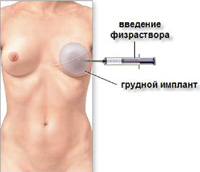
The expander gradually increases in size and stretches the muscles and skin above it. The second stage of breast reconstruction is then performed, during which the expander is removed and a silicone breast implant is inserted into the cavity. Dr. Sloser uses only the best certified expanders and prostheses. In cases where the size of the reconstructed breast is relatively small, a single-stage reconstructive surgery is possible. In these cases, a Becker breast prosthesis is used. It consists of two cavities, one of which (the outer one) is filled with silicone, and the inner cavity, like an expander, is filled with saline solution in portions. This type of implant retains the advantages of a conventional silicone prosthesis. One week after breast reconstruction, it is necessary to begin filling the expander with saline solution in portions.
Breast reconstruction using the patient's own tissue
If the mammary gland is removed along with the pectoral muscle or in cases of severe skin thickening (fibrosis) after radiation therapy, a breast reconstruction option using the patient's own tissue is recommended.
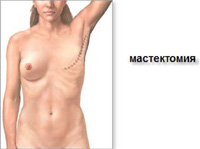
If the patient has small breasts, breast reconstruction is performed using a thoraco-dorsal flap. In our practice, we most often use the patient's own tissue for breast reconstruction, namely a flap of the broadest muscle of the back.
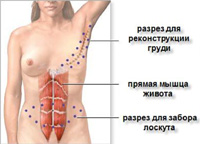
First, a muscle-skin flap is removed from the back and then transferred to the chest wall. The scar from the previous mastectomy is excised.
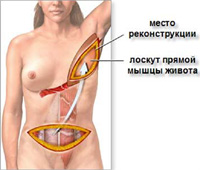
When the average breast size is average, there are several options for the skin-muscle flap to be used: from the anterior abdominal wall, from the lower part of the buttocks, from the lower part of the back (Rubens flap). These breast reconstruction techniques mainly require the use of microsurgical techniques.
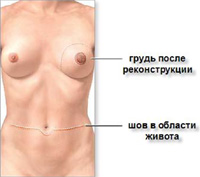
It should be noted that when the patient's breasts are large, it is often necessary to reduce the breasts on the opposite side. This allows for the most aesthetic result.
Combined reconstruction (implant in combination with a muscle-skin flap)
With this type of surgery, the advantage of using the patient's own tissue is complemented by the ability to add the necessary volume. Silicone implants are used, which are placed directly under the muscle-skin flap. These operations allow the breast to be reconstructed in one stage. The implants used have a lifetime guarantee and do not need to be replaced.
Often, the volume of the patient's own tissue is insufficient to achieve the desired result. In such cases, a hybrid breast reconstruction technique is used, which involves the use of a flap from the broadest muscle of the back and a breast implant.
What are the advantages of this technique?
- The use of the patient's own tissue allows for the most natural result possible.
- Less trauma compared to other techniques;
- Faster recovery after surgery
Indications for the use of this technique
- Reconstruction of medium and small breasts;
- The patient's desire to avoid scars in the anterior abdominal wall (other techniques);
- Radiation therapy in the breast area;
- Previous unsuccessful reconstruction with breast implants;
Contraindications for this type of reconstruction are:
- previous surgical procedures that may have damaged the thoracodorsal artery or nerve
-extensive lymph node dissection during mastectomy.
Reconstruction of the areola and nipple
According to our statistics, about 30% of women who have undergone breast reconstruction surgery also undergo reconstruction of the areola and nipple. This is a simple operation performed under local or general anesthesia.
The nipple is formed from the skin of the breast, and pigmented skin from the opposite areola or taken from the perineum can be used to reconstruct the areola.
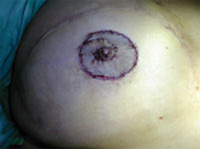
Photo from the archive of Dr. D. Slosser
Preparation for surgery
After consulting with a plastic surgeon and making a decision, you will undergo laboratory and instrumental diagnostics. In some cases, consultation with other specialists (e.g., oncologist, mammologist, gynecologist, endocrinologist, general surgeon, etc.) may also be required. Based on the results of the examinations and the conclusions of the specialists, you will consult with an anesthesiologist and obtain permission for the operation.
Two weeks before the operation, we also recommend that you stop taking any medications that affect blood clotting, quit smoking, or reduce the number of cigarettes you smoke.
How the surgery is performed
The surgery is performed under general anesthesia. Dr. Sloser prepares the breast area for the subsequent transfer of the flap. The next step is to remove the skin and muscle flap on the vascular pedicle and transfer it to the previously prepared area. If necessary, the surgeon will insert a breast implant or expander, which will be discussed with the patient beforehand. After that, drains are inserted and the wound is closed in layers with cosmetic sutures.
It should also be noted that when using an expander, the surgical procedure will take place in two stages. In the first stage, the surgeon inserts and secures the expander, and in the second stage, it is replaced with a breast implant. As a rule, the second stage of breast reconstruction takes place no earlier than six months after the first stage.
Rehabilitation
After surgery, we recommend staying in the clinic for one day. If necessary or if you wish, your stay can be extended. Immediately after surgery, you will be in the intensive care unit, where your condition will be closely monitored. After a while, you will be transferred to your own room, where you will stay until morning. The next day, after examination by Dr. Slosser, you will receive recommendations for wound care and drainage, a list of necessary medications, and information about the time of your next examination. We do not recommend driving during the first day after surgery, so please take this into account before the operation. In the first 5-7 days after surgery, you will experience pain and bloody discharge for 2-3 days. There will also be swelling and bruising, which will disappear completely within 1-2 months. One day after surgery, you will not be restricted in your movement and will be able to take a shower. Full rehabilitation takes 1-2 months. Physical activity involving the upper shoulder girdle is prohibited for 6 months.
Complications after breast reconstruction
Seroma - limited accumulation of fluid (lymph or serous exudate) at the site of flap placement or removal. To prevent this complication during surgery, the surgeon establishes drainage, and the patient wears compression garments during the postoperative period.
Treatment: Puncture under ultrasound guidance.
Marginal skin necrosis of the flap occurs in 5% of cases involving the use of large skin flaps. Its occurrence depends on the volume of tissue used, concomitant diseases, smoking, and the use of radiation therapy.
Treatment: consists of removing non-viable tissue and cleaning the wound.
Hematoma - accumulation of blood in the postoperative area. Occurs as a result of inadequate hemostasis (stopping bleeding), use of drugs that affect the blood coagulation system, excessive physical activity in the early postoperative period.
Treatment: Use of hemostatic drugs, evacuation of hematoma by puncture under ultrasound guidance or surgical arrest in case of active bleeding.
Wound infection - occurs when an infectious agent is introduced and the body's resistance is reduced.
Treatment: wound cleansing, use of drugs that affect infectious agents
Muscle weakness – in some cases, women experience weakness in the upper limbs and back, which is associated with the removal of part or all of the muscle. Physiotherapy and exercise can reduce discomfort.
Frequently asked questions
How long does the drain remain in the wound?
As a rule, the drain is removed 5-7 days after surgery. It depends on the amount and color of the fluid being drained.
What will the incision on my back look like?
We try to place the incision at the level of the middle of the shoulder so that the woman can hide it under a bra.
Will I feel the edges of the silicone implant?
No, because with this technique, the implant is placed under the skin and muscle flap.
What is symmetrizing plastic surgery?
Performing cosmetic surgery on a healthy breast (breast lift or reduction) so that both breasts are as symmetrical as possible in the end.
Prices
- Price, in uah
FAQ
In such an area as plastic surgery, prices depend on a number of factors: the level of the clinic, equipment, operations, and most importantly, the qualifications of the surgeon. One thing is for sure - this is not a case where you need to save money. After all, you can get to an unprofessional surgeon and get at least ugly scars and stitches, and at most a low-quality operation, which will then have to be redone by a professional.
Qualifications
Dr. Slosser Dmitry Vladimirovich is the only plastic surgeon in Kyiv and the CIS who received an academic education in this specialty at Hadassah University Hospital in Jerusalem and whose foreign experience spans 23 years. And his membership in ISAPS and EAFPS only emphasizes his high professional level as a plastic surgeon.
Unlike many other clinics, institutes and centers of plastic surgery located in Kyiv, Donetsk, Odesa, Kharkiv, Dnipropetrovs'k, Luhansk, Mariupol, Lviv and other cities of Ukraine, in our center all prices for plastic surgery in Ukraine are fixed and specified in the price list. All prices for services are indicated in UAH.
Our plastic surgery clinic in Kyiv allows you to perform any plastic surgery of any level of complexity. After all, Dr. Slosser was not in vain involved as an expert on the country's leading TV channels, where he performed the most complex reconstructive plastic surgery as part of television projects that everyone else refused.
The level of qualification of the staff, the presence of an intensive care unit, a plastic surgery center, and the first Karl Storz intelligent operating room in Ukraine allow us to successfully perform not only such popular plastic surgeries as nose surgery, face and neck lifting, breast augmentation, but also complex ones, including breast reconstruction and nose reconstruction. Plastic reconstructive surgery is at the highest level of performance.
We apply the most advanced techniques, use absolutely harmless anesthesia (which is used in pediatric cardiac surgery), which will allow us to be leaders in simultaneous operations. For example, when nose and breast surgery is performed simultaneously. At the same time, almost all of our patients are provided with an easy recovery from anesthesia, which allows them to be discharged from the clinic the very next day after surgery.
Our clinic performs both adult and pediatric plastic surgery in Ukraine, and the prices are affordable. On the before and after photo gallery page, you can see the results of plastic surgery. Plastic surgery of the breast (augmentation, reduction, lifting), nose, face, lips, ear(s), abdomen. Scars, keloid scars and their removal, otoplasty (ear reshaping), chin augmentation and reduction (chin reshaping).
A contract is concluded with each patient of the clinic, and after a detailed consultation, Dr. Slosser signs an informed consent for surgery (not a general one, but for a specific operation), and an informed consent for anesthesia. Before being discharged, each patient is provided with a certificate of completion and a statement. Payment is made in UAH at the clinic's cash desk. All medical records are kept in written and electronic form. All of these measures, including the professionalism of Dr. Slosser's team, provide the highest level of guarantees for the patient. We remind you that Plastic Surgery Kyiv performs all plastic surgeries only in Kyiv. In other cities of Ukraine - Odesa, Kharkiv, Donetsk, and Dnipropetrovs'k - we do not provide consultations or perform surgeries. However, in Lviv, we provide plastic surgery consultations on a monthly basis on a regular basis.
All operations are performed by the famous plastic surgeon Dr. Slosser Dmitry Vladimirovich, who is one of the leaders in his field and is rightfully included in the rating of “the best plastic surgeons in Ukraine”. He has more than 23 years of experience in plastic surgery (since 1997) and more than 10 thousand successfully performed plastic surgeries. His foreign experience in plastic and reconstructive surgery is
- 8 years of practice in Israel. Of these, 6 years - specialization (residency) in plastic surgery at Hadassah University Hospital.
- 11 years of work in Moscow as a leading specialist at the American Medical Center.
Nowadays, the level of plastic surgery in Ukraine is very high, and the plastic surgeries performed in Kyiv meet the highest international standards. That is why the flow of foreign patients seeking to improve their appearance is increasing every year. As of 2019, the clinic's plastic surgeons have successfully performed more than 480 plastic surgeries, the vast majority of which were performed under general anesthesia.

Calculate the cost of the operation: Breast reconstruction
Leave your details and we will contact you for an accurate assessment of the operation
Materials on the topic

Three nipples, or mammary glands on the body: a plastic surgeon explains why polymastia occurs
Specially for 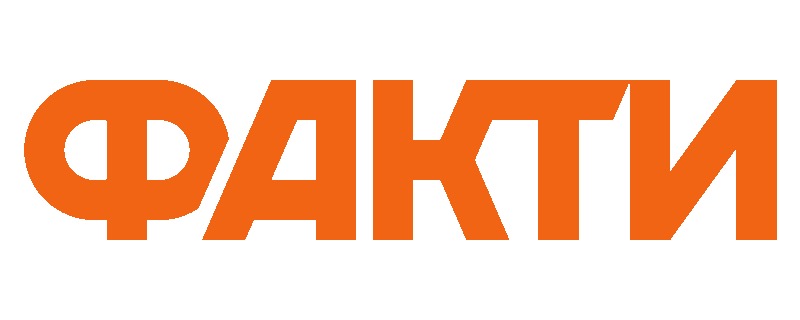
Polymastia is a condition in which a person develops an extra mammary gland that may have nipples and areolas. This phenomenon is mostly hereditary. Renowned plastic surgeon and distinguished doctor of Ukraine Dmytro Slosser told ICTV Facts more about three nipples in men and women and the specifics of treating this condition.
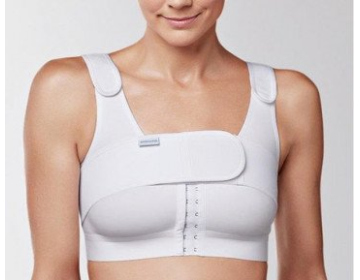
Белье после маммопластики: как правильно выбрать лиф
Правильный лиф должен обеспечивать нужную компрессию, чтобы снизить отек, избежать кровотечения или смещения имплантов во время активных движений или сна. Он обеспечит вам комфорт и поможет уменьшить боль, которую вы можете испытывать в течение процесса выздоровления.
